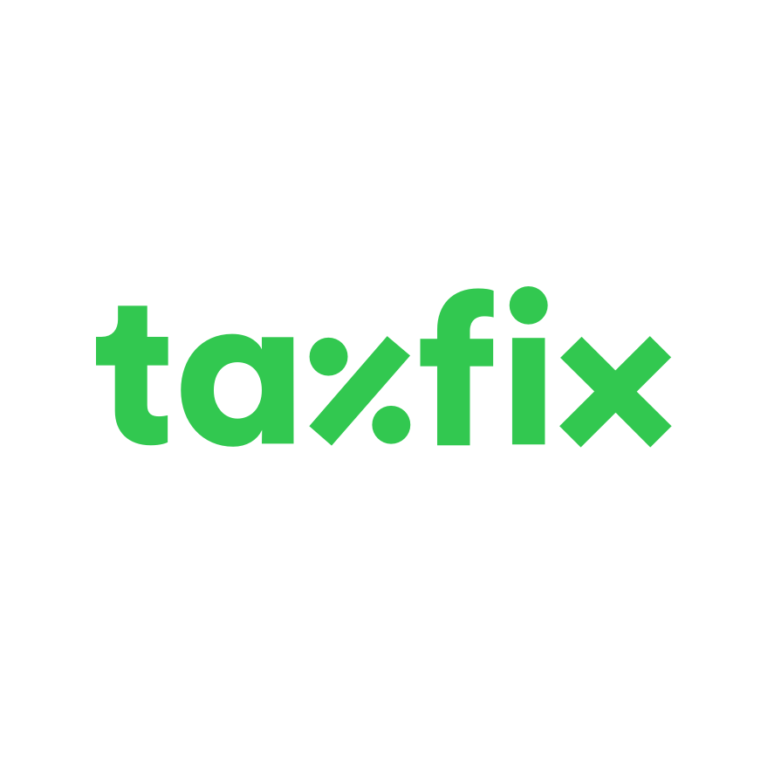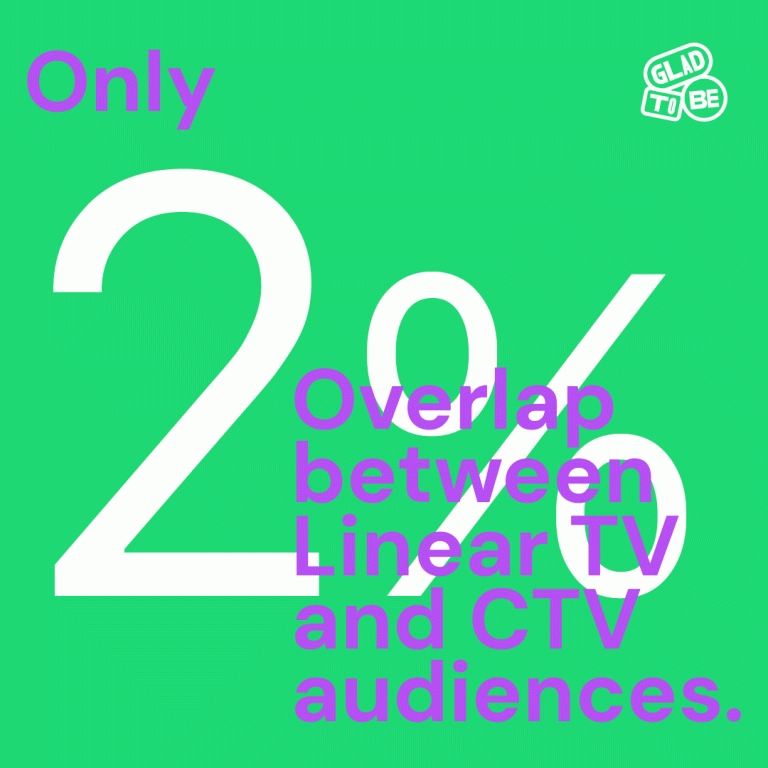The 2% overlap: what happens when
you run LTV and CTV together
When Taxfix approached us in early 2024, the industry was still treating Linear TV and Connected TV as separate planets. Most agencies were running parallel campaigns, double-tracking metrics, and essentially creating artificial walls between screens that viewers simply don’t see. We saw an opportunity to try something different – a truly connected approach that reflects how people actually watch TV today.
Our vision: TV is just TV (simple as that)
The industry works in a mindset of “either/or” – linear TV for branding, CTV for performance. But our data told a different story. We’d been tracking the convergence of these channels, studying the viewing habits of modern consumers, and we understood something fundamental: to viewers, whether they’re watching their favorite show on broadcast television or streaming it, they’re having the similar lean-back experience. The only difference is in how we, as advertisers, reach them – and with which inventory.

Breaking new ground
This wasn’t just about combining budgets or running the same creative across different platforms. We basically restructured how we approach TV advertising:
- We created a setup a clear tracking system to see how people watched TV across both traditional and connected TV, giving us a true picture of how people engage with content.
- We used smart scheduling to make sure ads didn’t repeat too often across all TV touchpoints, ensuring we reach viewers with the right message regardless of how they choose to watch.
- We worked on a new way of dayparting that accounts for the different viewing patterns of linear and streaming audiences, creating a more nuanced and effective targeting strategy.
We will address later on this article how all of it was measured, but even more interestingly, the results we’ve found.
The Taxfix challenge
Taxfix presented the perfect opportunity to put our integrated approach to the test. They needed to reach both traditional TV viewers and the growing number of cord-cutters, while maintaining efficient cost-per-registration metrics. The tax deadline created urgency, but also meant we needed to be smart about how we built frequency across platforms.
We designed a campaign that treated both channels as part of a single ecosystem. Rather than running parallel campaigns, we created a unified approach where Linear TV and CTV complemented each other perfectly:
- We used Linear TV’s broad reach and low CPM to build brand awareness, particularly during prime time when we could capture large family audiences
- We used CTV’s precision targeting and higher CPM to drive performance, especially during late-night hours when engagement rates peaked
- We maintained consistent creative across both channels but optimized the format for each platform
The results
The numbers validated our approach beyond our expectations:
- We achieved a perfect viewing frequency of 5.6 impressions per household across all TV touchpoints
- Brand metrics improved while cost-per-registration dropped
- We uncovered that 71% of all TV impressions now come through the big screen, regardless of delivery method
- When running both channels together, we achieved a remarkable 9.3% conversion rate, compared to 7.5% when running channels separately
- CTV proved to be incredibly efficient, with some platforms delivering CPMs 40% lower than traditional TV

The technology behind
We didn’t just theorize about integration – we built the infrastructure to make it happen. We developed systems to track viewer behavior across both channels, created unified reporting dashboards, and implemented real-time optimization tools that could shift budget between Linear and CTV based on performance.
More specifically, we applied our “tag-on” strategy across both platforms, using viewer behavior data to optimize messaging regardless of delivery method. This is where we saw our first big breakthrough – only a 2% overlap between Linear TV and CTV audiences. We weren’t cannibalizing reach; we were expanding it.
Lessons for the industry
Our work with Taxfix proved several key points:
- Integration isn’t just about running ads on multiple channels – it’s about creating a cohesive strategy that leverages the strengths of each platform
- Performance and branding don’t have to be separate goals – with the right approach, you can achieve both simultaneously. And we have a trademark name for that: GLADFORMANCE™ (true story).
- The future of TV advertising isn’t about choosing between Linear and CTV – it’s about understanding how to use both in harmony at the right time, in the right context.
The success of this approach hasn’t gone unnoticed. We had other major clients implementing this exact integrated TV strategy in Q5, and we’re excited to share those results once they’re in. Early indicators suggest that the Taxfix success story wasn’t a one-off – it’s a repeatable model that works across industries and objectives.
The best time to integrate your TV strategy was yesterday. The second best time is now.
Key performance facts
Our integrated TV approach delivered significant scale across both traditional and connected TV environments:
Total campaign reach achieved 2.98 billion impressions across all TV formats, with a verified 71% of impressions delivered via TV screens.
The campaign demonstrated the power of combining Linear TV and CTV:
- Net reach distribution showed minimal overlap between Linear TV (91%) and CTV (7%), with just 2% audience overlap, proving efficient audience targeting across formats
- Average frequency achieved: 5.6 impressions per household for optimal performance*
- Households reached: 13.6M in German market (from approximately 42M total households)
*Rule of thumb: in order for a TV campaign to really pick up performance, a minimum requirement of 3.5 OTS (opportunity to see) is recommended.
Key performance indicators showed strong results across both formats:
Linear TV:
- Brand Flight achieved 275.6 GRPs (increased from 201.7 in previous year)
- Net reach improved to 50.2% (up from 48.0%)
- CPM efficiency improved to €18.43 (from €20.91)
CTV:
- Achieved consistent CPM of €25.26-€25.31 across flight periods
- Conversion rate peaked at 9.3% in August (compared to 7.5% in July)
- Best performing daypart was 23:00-01:00 with highest conversion rate
Clear effectiveness patterns emerged across channel types:
Awareness Channels (AC):
- 74% of brand flight budget
- 47% prime time share
Volume Channels (VC):
- 37% of performance flight budget
- Strong performance in non-prime dayparts
Frequency Channels (FC):
- Despite only 22% budget share
- Delivered 68% of responses
- Generated 69% of total conversions












